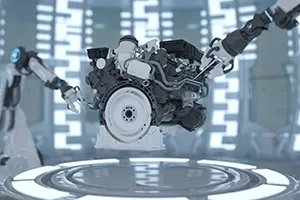2024-10-24 08:17:24Crcularonline

14 October marked International E-Waste Day – a poignant milestone in the calendar for Right to Repair campaigners.
E-waste is the fastest-growing solid waste stream in the world (even outpacing fast fashion). Numerous consumers choose to buy new devices and discard their old ones without giving it a second thought.
Only 17.4% of the e-waste generated during the production and disposal of new devices is properly collected and recycled each year, according to our recent Impact Report.
Big tech companies that lay down guidelines to encourage people to buy new phones instead of repairing their old ones are influencing consumers to contribute to e-waste – contributing as much as 77kg more carbon emissions to the atmosphere, according to ADEME.
The solution? Be a part of the refurbished revolution and champion the Right to Repair, a global movement to make sure everyone has the right to fix the products they own or want to resell.
A refurbished smartphone produces 89% less e-waste than a new device, a marked difference in e-waste reduction, and is an obvious solution.
Yet, it’s just not that simple. There still exists challenges between manufacturers and refurbishers to ensure that repairs can be carried out seamlessly to the quality standard consumers expect before they are deterred and choose to buy new.
A misaligned approach
In many cases, technology manufacturers build barriers into the hardware of their devices to ensure the repair process cannot be carried out by independent repairers or refurbishers.
This is known as parts pairing, meaning that certain parts of a device are individually tied to the device they belong to during production.
When an independent repairer or refurbisher changes a spare part for another compatible one, the device won’t recognise this new spare part.
Consequently, an alarming warning notification appears and gives consumers the impression that something is wrong with their device when that typically isn’t the case.
isn’t the case.
Worse still, the spare part installed may lose some of its functionality, even though it works perfectly, leading the consumer to believe that the repairer or refurbisher has done a poor job.
This hinders the repair process for refurbishers and independent repair shops, and we are left with only one solution: big tech needs to become unified with the Right to Repair movement.
The new legislation set to take effect by June 2025 will make electronic products more repairable, ushering in a new era of sustainability and design.
These regulations will empower independent repairers with access to spare parts and essential repair information for at least seven years after a product is no longer sold.
Manufacturers will also be required to provide compatible software updates for at least five years.
Apple’s IOS18 update, which includes a “Repair Mode”, alongside the growing Right to Repair movement, signals that society is ready to make repairs more affordable and accessible—despite resistance from major tech companies.
This is especially true for manufacturers, who need to embed eco-design principles into the manufacturing process from the outset to allow for repair in the future.
Even manufacturing or software updates that seem minor can cause much bigger problems further down the line when it comes time for customers to repair their devices.
Back Market
This is especially important when it comes to companies like Back Market, Europe’s largest online marketplace for refurbished devices.
We work with verified independent refurbishers to repair devices and find new homes for them (the rigorous 25-point quality charter ensures that every product is quality-tested).
This increases accessibility to advanced technology by lowering prices and helps to protect the planet by increasing the devices’ lifecycles.
But if big tech companies place barriers like parts pairing tactics in the way, it renders our work much more difficult.
Together with other stakeholders, including proponents of the Right to Repair movement, which Back Market avidly supports, we have been able to help set new standards for the industry across the world.
In Europe this summer, for example, the EU introduced a new directive that forces manufacturers to make spare parts and tools available at a reasonable price and ensure manufacturers are prevented from using contractual clauses, or hardware or software techniques to obstruct independent repairs.
Progress towards this ideal is not only about creating a circular economy but also about shifting our societal values.
It encourages people to care more about the planet’s resources, look after their devices better, and consume responsibly.
The majority of Europeans are already open to buying refurbished devices in the future and believe that manufacturers should be required to make devices easier to repair.
It’s now just about continued momentum forward and bold decisions from everyone involved in the industry.
Initiatives like this, promoted by societal shifts and enacted by the government, are crucial for the creation of a world where consumers have the right to repair their devices.
They also create momentum for wider changes, encouraging manufacturers to make it easier for anyone to repair their devices – at home or in repair shops – but they only work when everyone gets on board.
Declare:The sources of contents are from Internet,Please『 Contact Us 』 immediately if any infringement caused